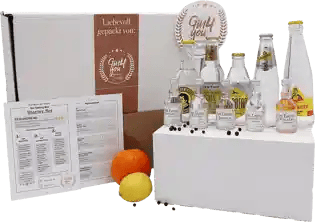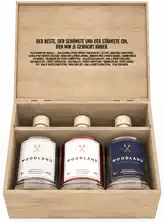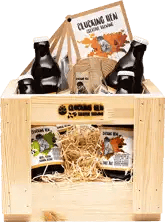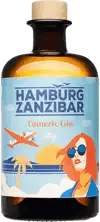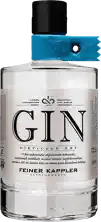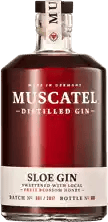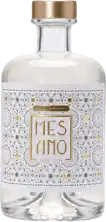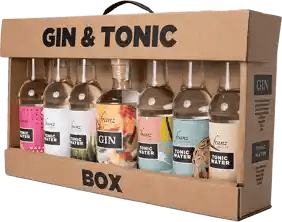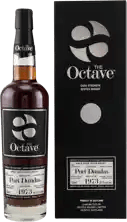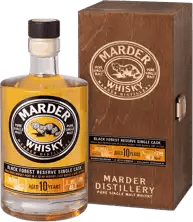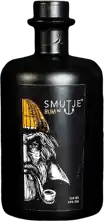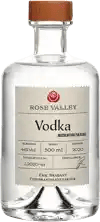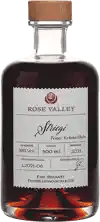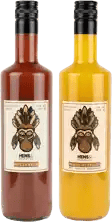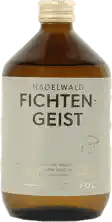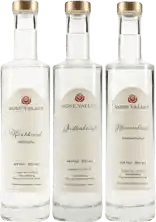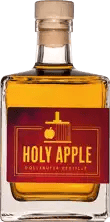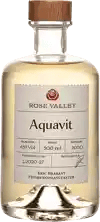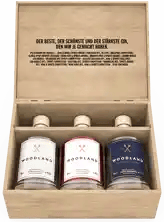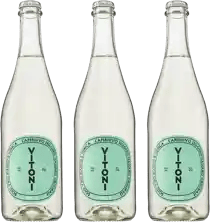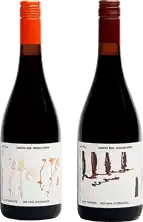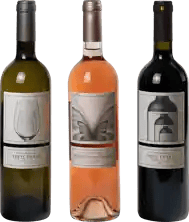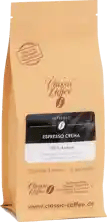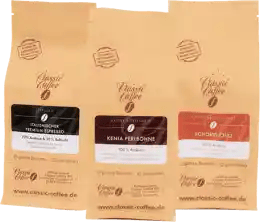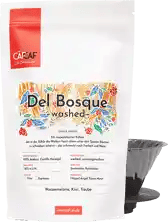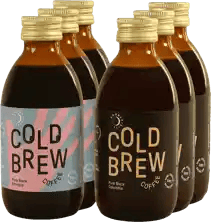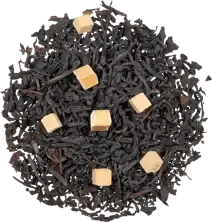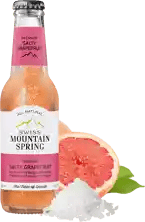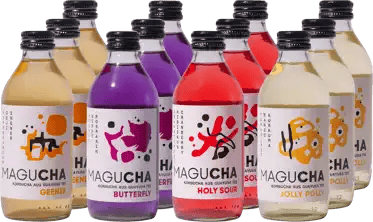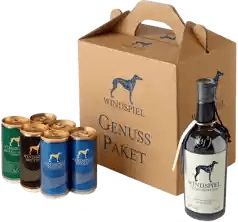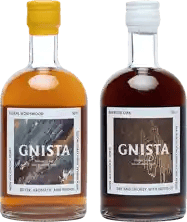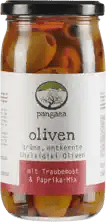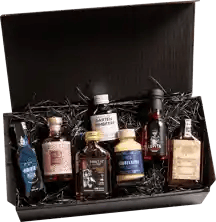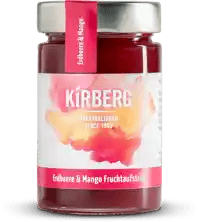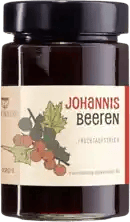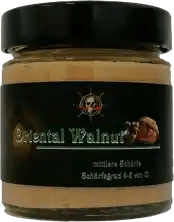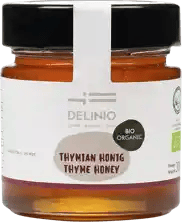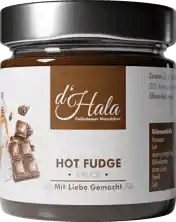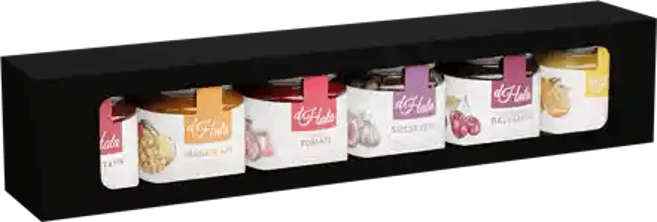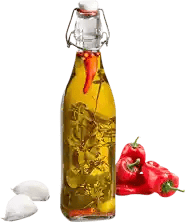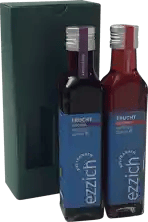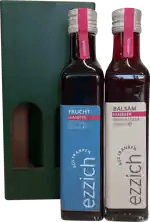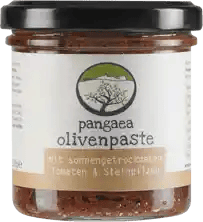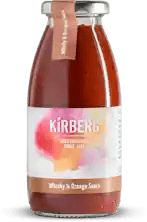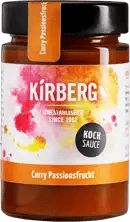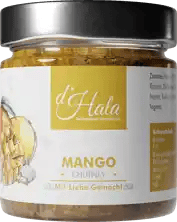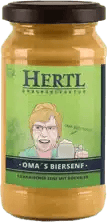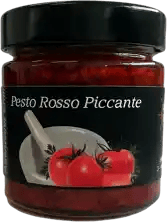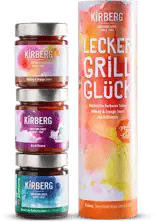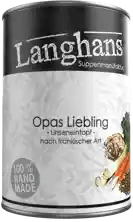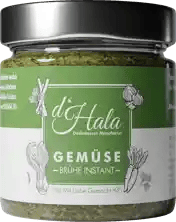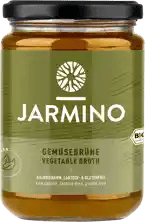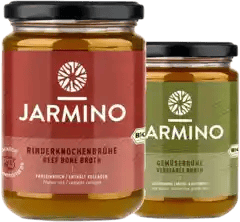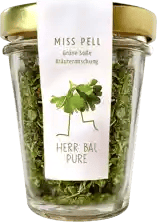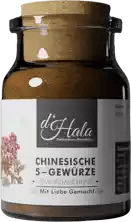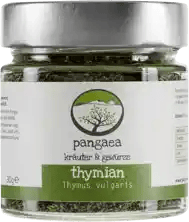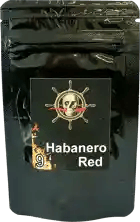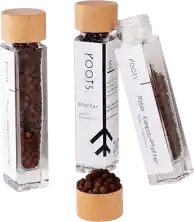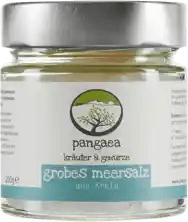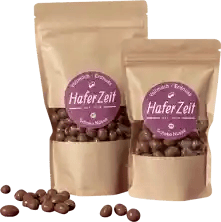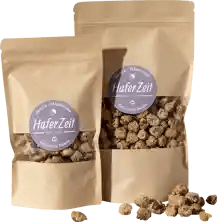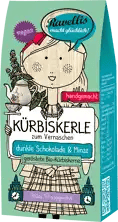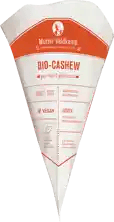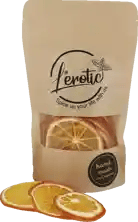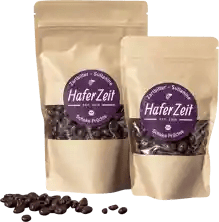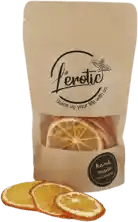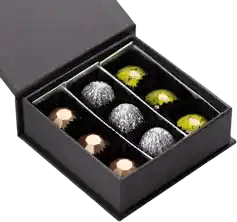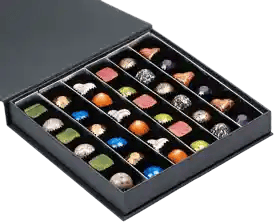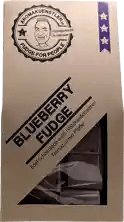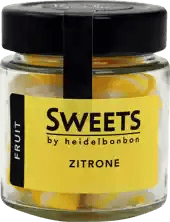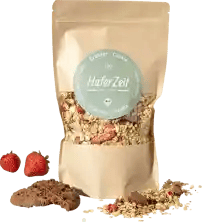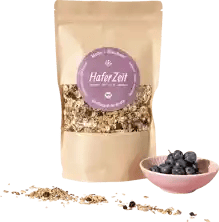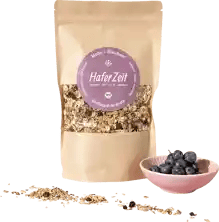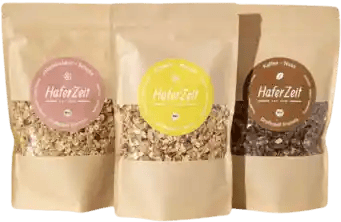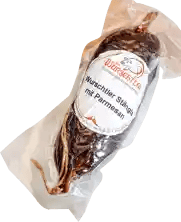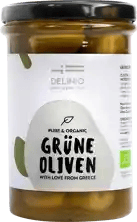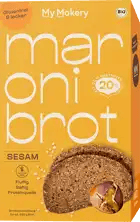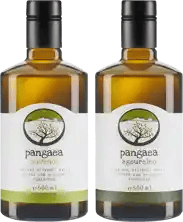Quality instead of quantity!
6,000 independent products
No mainstream
6.000 independent products
Spirits guide
They inspire the spirit, warm the soul and tickle the taste buds: spirits are one of mankind's most wonderful inventions. Yet it took a few centuries before a resourceful master distiller succeeded in unlocking the secret of distillation. In fact, the history of spirits is peppered with groundbreaking discoveries, stubborn political decisions and anecdotes typical of the time.
In our large Honest & Rare guide to spirits, you will find everything you need to know on the subject: from the beginning of spirits production to a classification of current varieties and practical tips for storage. We've also included a few fun facts to put a smile on everyone's face. Enjoy reading.
Contents
- 1 What are spirits?
- 2. spirits: history and origin
- 3. schnapps tradition in Germany
- 4 The distilling process of spirits
- 5. types of spirits from A to Z
- 6. buying spirits
- 7. spirits facts
- 8. spirits fun facts
1. what are spirits?
Spirit drink is the umbrella term for alcoholic liquids produced "for human consumption". Current EU law stipulates a minimum alcohol content of 15 percent by volume and an upper limit of 80 percent by volume. So while whisky and rum, gin and vodka or grappa and tequila are spirits, wine and beer, sparkling wine and champagne are not.
Etymologically, spirit is derived from the Latin "spiritus", meaning spirit. The term "spirit drink" is therefore not only common, but also extremely correct. More commonly, however, spirits are simply called schnapps in everyday language. Incidentally, this is a reference to the Low German "schnappen", which meant a quick sip from a slender (schnapps) glass.
Spirits are subject to a special alcohol tax in Germany and may not be sold to young people under the age of 18.
2. spirits: history and origin
The ancient Greeks, Egyptians and Romans loved their wine - but they did not know spirits in the modern sense. It was not until around the year 1000 that inquisitive contemporaries in Italian monastery kitchens experimented with high-proof alcohol. And the alchemists were also convinced that spirits could be a kind of magical panacea.
The problem for all inventors and researchers lay in one and the same circumstance: natural wine fermentation automatically stops at around 16% by volume, because at this point the yeasts required for fermentation are "killed" by the alcohol itself.
A scholar invents the first brandy
The Persian physician, scientist, philosopher and author Abu Bakr Mohammad ibn Zakariya ar-Rāzī was probably the first to produce ethanol around the year 900. Because he distilled wine, the term 'alcohol' (in common use from the 18th century onwards) goes back to an old Arabic word meaning 'spirit of wine'.
In Europe, in 1167, a scholar at the University of Salerno in southern Italy succeeded in distilling wine for the first time ever: Magister Salernus managed to separate pure alcohol in the form of flammable wine spirit from the non-flammable wine components. It was a milestone not only in the history of chemistry - it was the birth of spirits. However, the first "brandy" was by no means drunk; it was regarded as a medicine that was supposed to help against all kinds of ailments.
A bishop ensures improved distillation
Another hundred years later, Bishop Albertus Magnus of Regensburg invented the so-called still. After heating the wine, the resulting alcoholic vapors could be collected much better in this still. Nevertheless, brandy was initially reserved exclusively for medicinal use.
This was until creative inventors came up with the idea of using fruit and roots, grain and tubers for distillation in the absence of wine. The resulting spirits were more than questionable by today's standards - but the inferior liquor was readily consumed by poor people, not least to make their usually miserable situation seem a little better in the short term.
The first grain brandy comes from Nordhausen in Thuringia
Over the following centuries, the further refinement of distillation processes gave mankind an increasingly broad and sophisticated range of spirits. The first grain brandy, which came from Nordhausen, set an important milestone around 1507. From then on, distillation equipment and spirits continued to develop from mutual inspiration.
3. schnapps tradition in Germany
From the middle of the 17th century, spirits production in Germany developed dynamically: generally with a steep upward trend, although armed conflicts and political turmoil regularly put a damper on the spirits market. The first potato distillery opened in the Palatinate in 1750. This was followed by others in the districts of Lüneburg and Hanover.
In southern Germany, however, it was once again a bishop who gave spirits production a helping hand: as early as 1726, the Bishop of Strasbourg, Armand Gaston de Rohan, allowed all farmers in his dominion on the right bank of the Rhine to distil surplus fruit. To this day, the distilleries in the Renchtal valley around Oberkirch are among the most renowned distilleries for cherry brandy, plum and mirabelle plum brandy, Williams and raspberry brandy.
The rapid career of a clear spirit made from grain
While fruit brandies were being diligently produced in the south of Germany, especially in Baden-Württemberg and Bavaria, numerous grain and potato distilleries were established throughout Prussia. Korn experienced a rapid career: the spirit became the favorite drink of the upper classes - especially after the city of Nordhausen issued a purity law and the repeatedly distilled Doppelkorn caused a sensation.
Thuringia and the Ruhr region in North Rhine-Westphalia developed into strongholds of the grain distilling industry. The father of the later "Iron Chancellor" Otto von Bismarck was also a passionate distiller of spirits.
Berlin becomes the center of the spirits trade
The Pistorius distillation apparatus invented by Johann Heinrich Leberecht Pistorius changed the entire agricultural sector in the Prussian state: the distillation device made it possible to produce 60 to 80 percent alcohol even from potato mash. As a result, there were soon more than 1,400 potato distilleries in the province of Brandenburg alone - Berlin became the center of the spirits trade.
The cheap spirits encouraged mass consumption and fostered a sometimes devastating popular alcoholism. After fierce political and economic disputes, a Reich Spirits Tax Act was finally passed, which provided the basis for the later Spirits Monopoly Act signed by Kaiser Wilhelm II in 1918. It was intended to restrict the production of spirits and required distillery vessels to be sealed. The law was revised slightly over the course of time - but in principle, the 1922 version still applies today.
4 The distilling process of spirits
For centuries, the distillation of alcohol was regarded as magical and the production of spirits as a fine art, but basically it follows a very simple principle. The goodness and quality of a fine drop results to a large extent from the refinement and care with which breathtaking qualities are elicited from the basic principle.
Some spirits that are still valued today can look back on a very, very long tradition. The "burning water", for example, better known today as Armagnac. Or calvados made from fermented apple juice, cognac from the small French town of the same name. Finally, jenever, first produced on the outskirts of Amsterdam from a copper still heated with peat. The foundation for the later London gin.
Evaporating alcohol that takes typical aromas with it
The basis for all spirits is initially obtained through the fermentation of sugary solutions of grain and/or fruit, i.e. through a mash, or by soaking fruit and berries in neutral alcohol (maceration). The following step is referred to as distillation in the proper sense: The separation and concentration of the alcohol from the mash by distillation.
Typical aroma components, which are volatile in nature, should be included in the distillate as far as possible, while quality-reducing components of the fermentation or undesirable products should remain in the distillate residue as far as possible. By the way: This residue is called stillage and can be used both as animal feed and as fertilizer.
Spirits from different distillation processes
There are basically two different types of distillation of spirits: continuous and discontinuous.
In the continuous distillation process, the mash is continuously topped up in the still. The alcohol evaporates and condenses in the downstream cooler.
This process is preferably suitable for the production of larger quantities of alcohol. In the discontinuous distillation process, on the other hand, the mash is only filled into the still in portions and the alcohol and aromas are distilled off per portion. Depending on the type of spirit, the escaping, vaporized alcohol is distilled several times.
Why the "spirit" is not a "spirit" and vice versa
Depending on the type of spirit, the distillate obtained has an alcohol content of 40 to 75 percent by volume, which can be regulated by adding water for drinking pleasure. The addition of plant extracts during the distillation process is not only permitted for certain types of spirits, but is also intended - for other spirits, however, it is strictly prohibited.
A basic distinction must be made:
- Brandies or waters produced from the fermented mashes of special fruits. The process only works if the fruit contains sufficient sugar (which can be converted into alcohol by the yeast).
- Spirits made from unfermented, crushed fruit that is macerated in neutral, high-proof alcohol. This procedure is always necessary if the raw materials have a lot of aromas but too little sugar.
The neutral alcohol for spirits that has often been mentioned here is also known as agricultural alcohol because it is of agricultural origin and contains virtually no flavorings. It helps in the production of a wide range of spirits - from various liqueurs to gin and vermouth.
5. types of spirits from A to Z
The incredible range of spirits can best be classified according to the basic ingredients used. In addition to grain or fruit, sugar cane or agave, spirits made from wine also play a significant role.
We show you the different types of spirits:
Brandy - spirits made from wine
Brandy is the generic term for all spirits distilled from wine. The classic is the traditional brandy, which is preferably distilled from acidic wine. The smoky note and shimmering golden color are the result of ageing in oak barrels. The alcohol in brandy must come entirely from wine and be at least 36% by volume.
- Cognac is the protected trademark for the brandy from the French town of the same name.
- Armagnac (also protected as a trademark) is distilled only once, unlike Cognac, but is stored for longer.
- Brandy is a condensed variation of the term brandy and therefore serves as a collective term.
Spirits made from grape residues
The residues (skins and seeds) that inevitably occur during wine production are referred to as pomace. They are distilled again for a grape marc spirit. The spirits obtained in this way can be stored, but are in principle also suitable for immediate consumption. A grape marc spirit must contain at least 37.5% alcohol by volume.
- Grappa comes from Italy
- Marc from France
- Orujo from Spain
- Tsipouro from Greece
Spirits made from grain
The range of spirits made from grain is extremely wide. Strict regulations apply to some varieties, while there are far fewer guidelines for others. Even the choice of raw material is variable: although vodka is traditionally made from grain, productions from potatoes or molasses have also become established.
Grain
Korn is considered the quintessential German spirit. Its tradition goes back centuries and is primarily rooted in Westphalia, Münsterland, northern Thuringia, Schleswig-Holstein and Lower Saxony. The clear schnapps may only be distilled from wheat and rye, oats, barley or buckwheat - and only in Germany, Austria and some German-speaking regions of Belgium. Korn must also contain a minimum of 32 percent alcohol by volume.
- Kornbrand has 37.5,
- Doppelkorn 38 percent alcohol by volume.
Whisky
Whisky is one of the types of spirits that are strictly regulated in the production process. Any addition of sweetness or flavorings is prohibited, as is a minimum storage period of three years in wooden barrels. In contrast, the amber-colored spirit can be made from barley (malt), rye (rye), corn (bourbon, corn) or wheat (grain, the basis for blended whiskies). The minimum alcohol content must be 40% by volume.
- Scotch is Scottish whisky,
- Bourbon, rye and corn are preferably from America,
- Irish whiskey bears the additional "e".
- Single malt refers to whiskies made from malted barley that come from just one distillery,
- Single cask stands for bottling from just one cask.
Vodka
Rye and wheat, potatoes or molasses: as mentioned, the raw materials used to make vodka vary. The pure distillate tastes almost neutral, which is why it is often flavored, preferably with blackcurrant, mandarin or vanilla. Vodka is not usually stored.
Fruit brandies: spirits made from fresh fruit
Fruit brandies are among the spirits with great aromatic finesse. The distillate made from fresh fruit (apples or pears, plums, cherries or mirabelle plums) almost always reveals the nuances of the respective base ingredient. 37.5% by volume is the rule.
- Vieille Prune is a fruit brandy made from plums,
- In France, eau de vie is made from pears, apples, plums, mirabelle plums or cherries,
- Calvados is distilled from fruit wine (cider),
- Fruit brandies are spirits produced from the mashes of different fruits.
Fruit spirits: Spirits with even more flavor
Fruit spirits are made from fruit that has a rich, natural aroma but does not have enough sugar for fermentation. Raspberries, blackberries, sloes and elderberries are therefore macerated in neutral agricultural alcohol. The fruit alcohol is then distilled.
Rum: spirit made from sugar cane
According to the European Spirits Regulation, a rum must have at least 37.5% alcohol by volume in order to be labeled as such. The spirits are either distilled from the remaining molasses produced during sugar extraction or - less frequently - from the syrup or sugar cane juice.
Just like whisky, rum must not be flavored or sweetened. The diluted distillate is clear: this white rum is usually bottled immediately. Brown rum gets its golden to amber-colored note through oak barrel storage. Characteristic flavor components are achieved depending on the type and previous use of the barrels.
The Caribbean is considered to be the original home of rum, as the climatic conditions here are ideal both for the sugar cane to thrive and for the storage of the spirit.
- Blended rums are spirits from different oak barrels of different ages that are mixed together.
- Blended rum contains only around five percent "real" rum, with the rest coming from neutral alcohol.
- Overproof rum is predestined for cocktails: it contains 57.15 percent alcohol by volume.
Mezcal: spirit made from agave
One of the most typical Mexican spirits is mezcal, which is made from the pulp of various agaves. The spirit with 40% alcohol by volume is also a collective term for all agave spirits. The best-known and internationally most popular mezcal istequila from the city that gives it its name: it can only be distilled from the pulp of the blue agave without exception.
Spirits with characteristic flavoring
Neutral agricultural alcohol is skillfully flavoured with spices and plant parts, sometimes according to closely guarded recipes, to create spirits with a typical character.
Gin
It is mainly juniper berries that give gin its accentuated taste. Depending on the brand, other flavoring plant components and herbs (botanicals) are either added directly to the raw alcohol or absorbed through the alcohol vapors. Gin must have at least 37.5% alcohol by volume.
Sambuca and ouzo
Aniseed spirits get their unmistakable aroma from star anise, fennel and other plants with similar aromatic substances. Ouzo from Greece and sambuca from Italy (both spirits contain 40% alcohol by volume) fall into this category, as do pastis from France and arak from Israel, Jordan or Syria.
Aquavit
Probably the most popular spirit with caraway seeds in Germany is aquavit, which is drunk ice cold in this country - in its native Scandinavia, however, room temperature is preferred.
Bitters and absinthe
Absinthe, as "the" classic bitter spirit par excellence, owes its nickname "the green fairy" to its mostly green color. It is created by adding bitter-tasting herbs, preferably wormwood. However, absinthe does not necessarily have to taste really bitter. The alcohol content, on the other hand, is quite something: it varies between 45 and 89 percent by volume.
Are liqueurs actually also spirits?
That depends on the sugar content: The European Spirits Regulation sets a clear limit of 100 grams of sugar per liter. As soon as a spirit reaches this limit and also contains the aforementioned 15 percent alcohol by volume, it is considered a liqueur.
Which additional flavors and fruit extracts, herbs and other ingredients are used is irrelevant. The alcohol content of a liqueur can also be significantly higher than the minimum of 15 percent. Amaretto, for example, has 20 to 30 percent alcohol by volume, Grand Marnier a remarkable 40 percent.
6. buy spirits
Hardly any "normal" stationary retailer can stock the huge range of spirits presented so far. Rents are far too expensive in city center locations and the limited demand in rural areas hardly justifies such a commitment. So if you are looking for specific or special spirits, you are generally well advised to buy them online.
Here in our online store at Honest & Rare, you will also find precious, hidden treasures that are hard to find anywhere else. We provide each of our spirits with a small characteristic (style, taste, origin, alcohol content, storage, storage time and cask type) so that you can decide at your leisure whether this spirit is exactly what you are looking for - or simply want to try it out.
And if you're not quite sure, just give us a call: Honest & Rare is made by real experts - and they are always happy to help with their knowledge. By the way: we always have time for a little shop talk.
7. spirits facts
Spirits generally do not have a best-before date printed on them. How long vodka and Tennessee whiskey, Kahlua or eggnog actually last depends on their alcohol and sugar content.
Shelf life of spirits with more than 35% by volume
Whether gin, whisky, house schnapps or brandies - high-proof spirits with more than 35% alcohol by volume have a practically unlimited shelf life, both opened and sealed. The high alcohol content acts as an "automatic" preservative. However, the taste and especially the appearance of spirits can change slightly over time. Rule of thumb: Always store opened spirits upright, protected from sunlight, dry and at evenly moderate temperatures.
Shelf life of low-proof spirits
Alcoholic drinks with less than 35% by volume can also be kept for several years, but this does not necessarily make them any better. The taste of liqueurs with a high sugar content in particular suffers. Opened liqueurs should therefore be consumed within a year. Even when sealed, cream liqueurs should be consumed within two years. Here, too, the following applies: store upright and protected from light, preferably in the refrigerator once opened.
Non-alcoholic spirits
In principle, there are no alcohol-free spirits, as the combination is a contradiction in terms: by law, spirits must contain at least 15% alcohol by volume. Nevertheless, the market has simply ignored this legal finesse and created products that imitate the taste of gin, rum, whisky and vodka, but contain a maximum of 0.5% alcohol by volume or none at all. For the most part, the results are respectable.
In any case, they meet a growing demand: almost everyone knows the situation in which alcohol is taboo despite a social gathering, for example because the car keys are in the jacket pocket or a medication is circulating in the bloodstream. Non-alcoholic spirits are a welcome alternative to cola or water - and are now part of the well-stocked bar supplies. Non-alcoholic gin in particular has been in the fast lane for several years. Every year there are new brands and manufacturers that offer a non-alcoholic gin alternative and are constantly improving their recipes and taste.
Exceptional spirits
Exclusive spirits in high-quality bottles are an exquisite gift or a special reserve for exceptional occasions. In most cases, these are spirits that are only bottled once - either for a single vintage or even for selected barrels. These limited editions increase in value even before all the bottles have been sold. Exclusive rarities are particularly available in whisky, rum, gin and cognac - and can be selected here in our spirits online store.
8th Spirits Fun Facts
Alcohol, or ethanol, is the heart of spirits. The chemical formula for it is C2H5OH. If you want to remember the formula, it's easy with this mnemonic, where the first letters are read backwards: "Mr. Waiter, 5 Helle (and) 2 Corn."
The strongest spirit in the world
Unpronounceable and not to be enjoyed neat: The strongest liquor in the world is Spirytus Rektyfikowany, a vodka from Polmos Warszawa with 96% alcohol by volume.
The most expensive spirit in the world
A bottle of the first edition of the "M-City Golden Cities" rum from the Dictador distillery in Cartagena, Colombia, costs1.5 million dollars. As soon as the edition has reached the value of one billion dollars, it is to be closed forever, according to the announcement.
The oldest documented spirits recipe
According to the Guinness Book, the "Jiuyun Chinese Spirits Distillation Method" is the oldest documented spirits recipe in the world. It originates from Bozhou, Anhui in China and was used as early as 196 AD.
The most drunk spirit in the world
With 13 billion liters per year, the Chinese rice schnapps Baijiu clearly tops the list of the world's most drunk spir its. Vodka follows in second place - with just half the amount. However, "worldwide" is a bit of a misnomer - baijiu is drunk almost exclusively in China.
Fancy some spirits? We have something for you
If this comprehensive reading has whetted your appetite for one or two specialty spirits, why not browse through our large and exclusive selection? As an open marketplace, Honest & Rare is always providing new, exciting and unusual additions. We are happy to make you happy.
Brilliant!
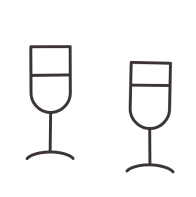
Bitte bestätige deine Anmeldung noch eben - du hast eine Bestätigungsmail von uns. Klicke darin auf den Link. Danach bekommst du deinen Rabattgutschein.

